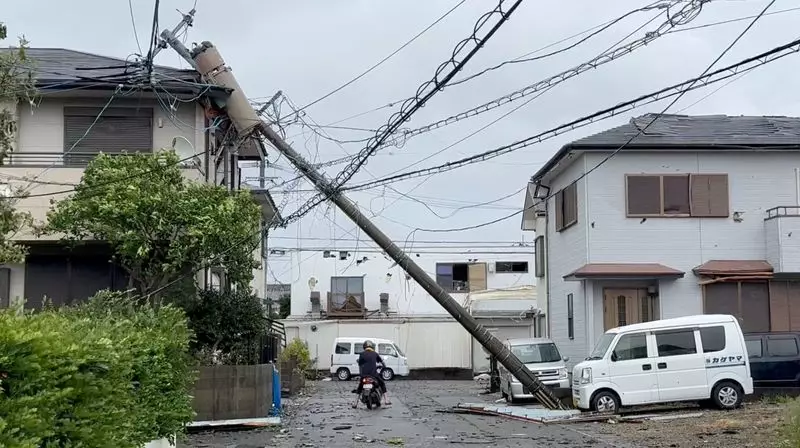Typhoon Shanshan wreaked havoc across Japan, inundating large parts of the country with heavy rains. The storm prompted warnings of flooding and landslides, causing significant disruptions to travel services and industrial production. The southwestern region of Kyushu, where the storm made landfall, bore the brunt of the disaster, with residents in Fukuoka city facing the full force of the typhoon. Streets were eerily quiet, and shops remained closed as people hunkered down to weather the storm.
Impact on Residents
University student Kokoro Osoegawa, 21, found herself stranded at a rain-lashed deserted shopping mall, unable to make her way home due to the suspension of train services. She expressed her frustration at the situation, highlighting the unprecedented nature of the storm. The disruption in transportation services left many residents stranded and struggling to find alternative means of getting home.
Human Toll of the Disaster
The typhoon has already claimed the lives of at least three people and left 78 others injured in storm-related incidents. The disaster management agency reported numerous cases of injuries and casualties, underscoring the severity of the situation. The high winds and heavy rains brought by Typhoon Shanshan caused significant damage and posed a serious threat to the safety of residents.
Infrastructure Disruptions
The strong gusts of wind, reaching up to 180 km per hour, led to the toppling of trucks and caused power outages in around 125,000 households across seven prefectures in Kyushu. The extensive damage to infrastructure and disruptions to essential services have created challenges for authorities in managing the aftermath of the disaster. The storm’s impact was felt far beyond the initial landfall area, with heavy rains affecting regions across the country.
Economic Impact
The industrial sector also bore the brunt of Typhoon Shanshan, as major factories, including those of automotive and electronics companies, were forced to halt production. Companies like Toyota, Nissan, Honda, Renesas, Tokyo Electron, and Sony suspended operations in their domestic plants due to the storm. The disruptions in production have implications for the national economy and highlight the vulnerability of key industries to natural disasters.
The storm caused widespread disruptions to transportation services, with airlines, ferry services, and rail networks all affected. Leading airlines like ANA Holdings and Japan Airlines had to cancel hundreds of flights, while ferry and rail services, including the bullet train, were suspended. The chaos in the transportation sector left many travelers stranded, unsure of when they would be able to reach their destinations.
The impact of Typhoon Shanshan extended beyond Japan’s borders, with tourists like Lin Yue-Hua from Taiwan experiencing the fallout of the storm. Lin’s flight home was cancelled, leaving her and others stranded in Japan. The international ramifications of the disaster underscore the need for a coordinated response to natural disasters that transcend national boundaries.
Continued Threat of Severe Weather
Typhoon Shanshan is just the latest in a series of harsh weather systems to hit Japan in recent times. The country continues to face the threat of severe weather events, necessitating robust preparedness measures and a coordinated response to mitigate the impact on lives and livelihoods. The fallout from Typhoon Shanshan serves as a stark reminder of the vulnerability of communities in the face of natural disasters.

